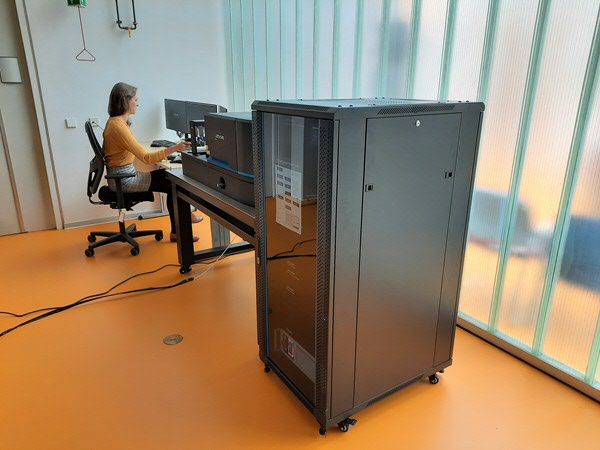Top of the range C-trap optical tweezers setup installed
A new LUMICKS C-trap optical tweezers setup has recently been installed in the Groningen Biomolecular Sciences and Biotechnology Institute (GBB). This advanced device is one of only around 40 of such instruments in the world. It is intended for experimental research on protein folding and stability.
The instrument is a top-of-the-range single molecule optical tweezers setup with three-colour fluorescence, microfluidics and temperature control. Dr. Katarzyna Tych will use it to build on the understanding of how different protein molecules function by observing their movements in real-time. Her research has been focused on chaperone proteins, which are important in maintaining the correctly folded and therefore functional structures of other proteins. Dr. Tych plans to extend her repertoire to include proteins which have been studied by other groups within the GBB, including transmembrane transporters, and to develop new capabilities for the single molecule optical tweezers setup.

| Last modified: | 19 June 2020 2.50 p.m. |
More news
-
25 April 2025
Leading microbiologist Arnold Driessen honoured
On 25 April 2025, Arnold Driessen (Horst, the Netherlands, 1958) received a Royal Decoration. Driessen is Professor of Molecular Microbiology and chair of the Molecular Microbiology research department of the Faculty of Science and Engineering at the...
-
24 April 2025
Highlighted papers April 2025
The antimalarial drug mefloquine could help treat genetic diseases such as cystic fibrosis, Duchenne muscular dystrophy, as well as some cancers.
-
22 April 2025
Microplastics and their effects on the human body
Professor of Respiratory Immunology Barbro Melgert has discovered how microplastics affect the lungs and can explain how to reduce our exposure.
